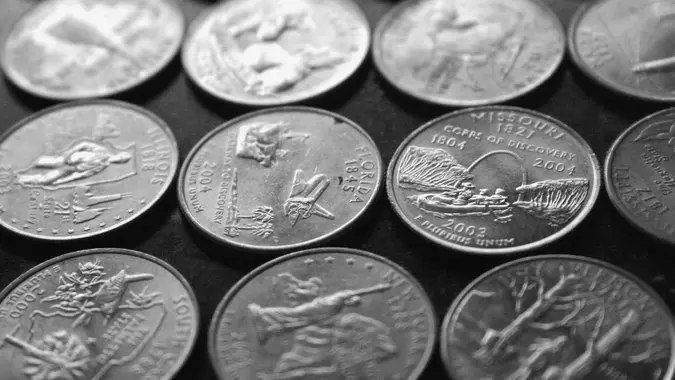What You Should Know About the Inverted Yield Curve and Economic Trouble

Commitment to Our Readers
GOBankingRates' editorial team is committed to bringing you unbiased reviews and information. We use data-driven methodologies to evaluate financial products and services - our reviews and ratings are not influenced by advertisers. You can read more about our editorial guidelines and our products and services review methodology.

20 Years
Helping You Live Richer

Reviewed
by Experts

Trusted by
Millions of Readers
Inverted yield curves happen when bonds with shorter maturity periods have higher yields than bonds with longer maturity periods. Under normal circumstances, it’s the other way around. Since longer-term debt carries greater risk than shorter-term debt, bonds with longer durations naturally have higher yields. Check any bank’s website and you’ll see that six-month CDs pay lower rates than CDs that require you to part with your money for two years.
The Economy and Your Money: All You Need To Know
More Economy Explained: What Is Inflation and What Does It Mean When It Goes Up or Down?
Inverted yield curves are remarkable and thankfully rare events. They’re important because they serve as one of the most reliable predictors of economic trouble on the horizon.
Inverted Treasury Yield Curves Can Be Recession Early Warning Systems
Economists pay extra close attention to inverted yield curves when they happen with Treasury bonds, notes, or bills. That’s because short-term Treasury yields track the all-important fed funds rate, which is the interest rate that banks charge other banks to borrow their excess cash.
Find Out: What To Expect From an Economic Boom
Here’s why that’s important:
- When the yield curve inverts, it’s because investors think that their money will be safer with long-term Treasurys than they would with short-term Treasurys.
- That’s because the Federal Reserve lowers the fed funds rate when the economy stalls.
- If investors buy short-term Treasurys when the economy is stalling, those bonds will mature and force their holders to reinvest that money during an economic downturn.
- That — coupled with the fact that investors expect short-term Treasury yields to collapse during a recession — sends demand for long-term Treasurys soaring.
- A boom in demand causes long-term Treasury yields to fall.
- Just as long-term yields are falling, short-term Treasurys respond to a drop in demand by raising their own yields. Eventually, short-term yields climb so high and long-term yields fall so low, that the curve inverts.
Read More: What Is the GDP – and What Does It Have to Do With You?
It’s All Very Complicated, But It’s Also Quite Simple
If you’re new to this subject matter, that’s a lot to take in, but remember the following:
- Yields should be higher for long-term Treasurys than for short-term Treasurys.
- When they switch, it’s because investors don’t have confidence in the economy’s near-term prospects.
- When demand for long-term bonds gets so high that the yield curve inverts, a recession is likely.
Discover: Understanding US Productivity and All the Ways It Affects You
Historically, Inverted Yield Curves Are Excellent Oracles
The economy moves between periods of growth and recession. An inverted yield curve has preceded every single recession since 1956, according to CNBC. That’s 11 recessions out of 11, according to Forbes. In that time, there has been only one false positive, which makes the inverted yield curve one of the most predictably accurate indicators of an impending recession. It’s important to note that inverted yield curves are leading indicators. The recessions that tend to follow them usually don’t arrive for months or even years after the curve inverts.
Did You Know: What Is Adjusted Gross Income?
An inversion preceded the bursting of the tech bubble in 2001. The next one came in 2005. Two years later in 2007, a recession set in just before the financial crisis shook the world in 2008.
Find Out: National Debt and Deficit — What Is It and How Does It Affect Me?
Most recently, the yield curve inverted briefly in March 2019. The Fed responded, according to Forbes, by slashing rates. That action might have helped avert — or at least delay — an impending recession. About a year later in February 2020, the yield curve briefly inverted again, which makes many of today’s top economists uneasy, to say the least.
This article is part of GOBankingRates’ ‘Economy Explained’ series to help readers navigate the complexities of our financial system.
More From GOBankingRates
- What Money Topics Do You Want Covered: Ask the Financially Savvy Female
- 5 Things Most Americans Don’t Know About Social Security
- 20 Home Renovations That Will Hurt Your Home’s Value
- What Income Level Is Considered Middle Class in Your State?
 Written by
Written by 

























